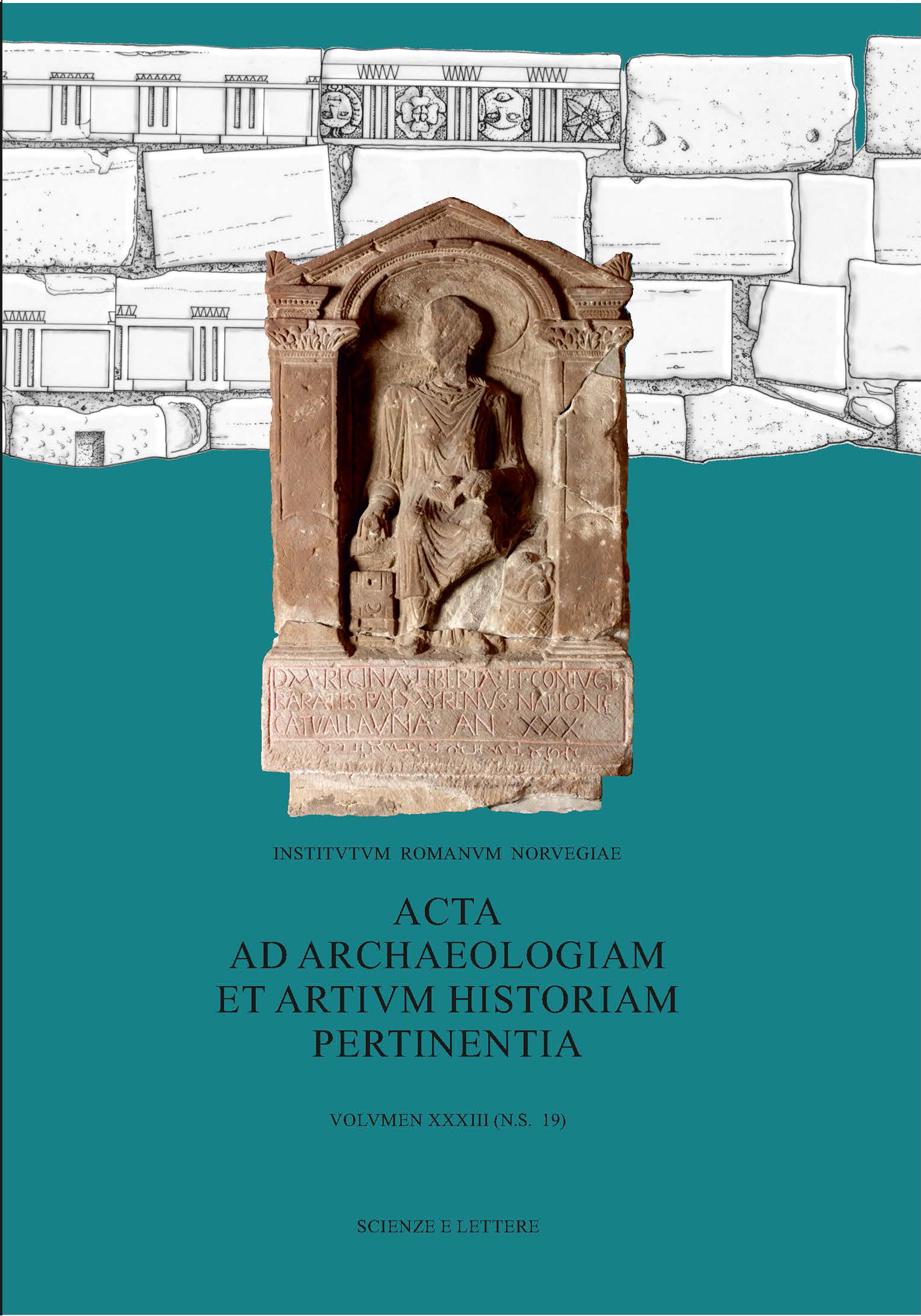Chains of gold: female status and the Roman 'catena' in the early Imperial period
DOI:
https://doi.org/10.5617/acta.10442Emneord (Nøkkelord):
adornment, jewellery, catena, Imperial Rome, female sensuality, body-chain, AntiquitySammendrag
This article considers the Roman body chain (catena), which comprises two long lengths of woven gold chain worn crisscrossing the torso. Roman illustrations of women wearing catenae demonstrate that the form carried strongly erotic connotations relating to the goddess Venus and female sensuality. A small corpus of preserved body chains from the Vesuvian region testifies to their actual use by women in the first centuries BC and AD. This study examines the status of the women who wore such jewellery, which combined clear economic expense with erotic messaging. In opposition to claims that the sexual nature of body chains signals their association with prostitutes, it is argued here that visual and textual sources contemporaneous with the Vesuvian chains point to women of “respectable” social categories having both the freedom and incentive to express a confident sexual identity. Important archaeological evidence offers further indications for the ownership and use of catenae by Roman women of varying status. The potential meanings and motivations underlying the shared use of this symbolic form of adornment are also addressed.
On cover:
Late Roman wall, the portion immediately south of the West Gate (Porta Oea) with re-used blocks from first-century mausolea (Drawing by Francesca Bigi) and Tombstone of Regina from South Shields (Arbeia) (Tyne and WearArchives and Museums/ Bridgeman Images).
E-ISSN (online version) 2611-3686
ISSN (print version) 0065-0900
Nedlastinger
Publisert
Hvordan referere
Utgave
Seksjon
Lisens
Opphavsrett 2023 This work is licensed under a Creative Commons Attribution-NonCommercial 4.0 International License.

Dette verket er lisensiert under Creative Commons Attribution-NonCommercial-NoDerivatives 4.0 International License.

This work is licensed under a Creative Commons Attribution-NonCommercial 4.0 International License.
Authors who publish with this journal agree to the following terms:
- Authors retain copyright and grant the journal right of first publication with the work simultaneously licensed under a Creative Commons Attribution License that allows others to share the work with an acknowledgment of the work's authorship and initial publication in this journal.
- Authors are able to enter into separate, additional contractual arrangements for the non-exclusive distribution of the journal's published version of the work (e.g., post it to an institutional repository or publish it in a book), with an acknowledgement of its initial publication in this journal.
- Authors are permitted and encouraged to post their work online (e.g., in institutional repositories or on their website) prior to and during the submission process, as it can lead to productive exchanges, as well as earlier and greater citation of published work (See The Effect of Open Access).





